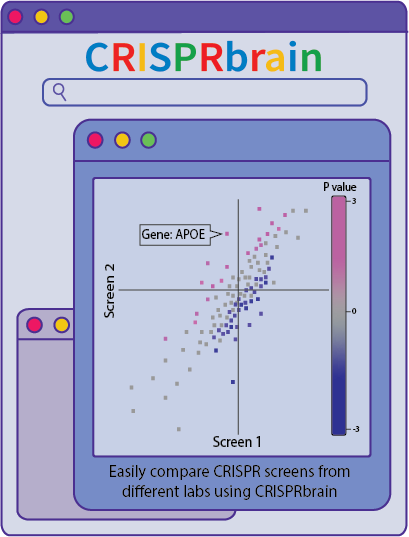Growth mindset: crafting policy to maximize the potential of GE crops
April 23, 2020

Genetic engineering is the direct manipulation of the genes of an organism. It has enabled researchers and manufacturers to tap into the existing machinery of living cells both to advance our understanding of basic science and to develop new products, including medicines and foods. Today, scientists program cells to tag their own proteins with fluorescent molecules that can be tracked while the cells are still alive, pharmaceutical companies sell human insulin and human insulin analogs synthesized by bacteria and yeast, and farmers grow crops that are herbicide-resistant and express insecticidal proteins.
Even as genetically engineered (GE) organisms become more ubiquitous, surveys suggest that public understanding of the technology remains mixed and mistrust of its use in agriculture remains high. Such ambivalence raises concerns for groups, including scientists, who have a vested interest in the potential for advancement offered by genetic engineering. On January 21, 2020, the Science Policy Group at Berkeley, a group of STEM graduate students who seek to understand more about the intersection of policy and science, invited geneticist Sarah Hake and economist David Zilberman to discuss the future of GE crops. The public forum was the second event under the Science Policy Group’s Science Meets Science initiative, a series of talks and workshops that brings together social scientists and STEM scientists to explore scientific ethics.
Erin Sullivan, a chemist and an executive of the Science Policy Group, served as a moderator for the discussion. To begin, she asked the guests to introduce themselves and to discuss their work on GE organisms. Zilberman is a professor in the Department of Agricultural and Resource Economics at UC Berkeley, and he has served as a consultant to international agencies like the World Bank and domestic ones like the Department of Agriculture and the Environmental Protection Agency, among other organizations. He is broadly interested in agricultural and environmental policy and has worked on topics including waste management and water control. Zilberman believes that studying economics without an understanding of science is like trying to drive a car without an engine, and although he admits that his scientific expertise is limited, he tries to make sure that his policy suggestions are informed by science. Zilberman sees GE crops as a crucial tool in the fight against climate change and the drive for environmental preservation, so he advocates for improved regulations that allow the world to take advantage of this technology.
Hake’s research is focused much more on basic science. She is a professor in the Department of Plant and Microbial Biology at UC Berkeley and the director for the USDA Plant Gene Expression Center. Her lab studies how genes determine patterns in plant development. When she is not at work, she lives on Gospel Flat Farm, an organic farm she runs with her husband and son, and she regularly interacts with neighbors and community members who are opposed to GE crops. Both she and Zilberman understand the common criticism that big companies tend to monopolize GE crops, but they also both believe that improved education on the topic would convince people of the utility of genetic engineering. Hake says that genetic engineering is like computing; the technology holds tremendous value for all people, regardless of their intentions. The tool itself is morally neutral and has the potential to bring a lot of good into the world if it is properly regulated.
After Hake and Zilberman had a chance to introduce themselves and their thoughts on GE crops, Sullivan asked them questions submitted by the members of the audience. The format enabled the invited speakers to cover a lot of ground, but it did not allow for much interactive discussion. The Science Policy Group held a follow-up roundtable the following week on January 30, 2020. When I met with Vetri Velan, a physicist and another executive of the group, two weeks later on February 13, he said, “The goal for the session was to generate a policy proposal that we could write about: whether that would be in an op-ed to a newspaper or online publication or alternatively to a memo which would be a little bit more technical, a little bit lengthier.” The group also sponsors regular trips to Sacramento, where they advocate for state-level policies, so the ideas that have emerged from their work on their policy proposal may influence their future interactions with public officials as well.
“As we were talking we realized there's just so many more things going on than any of us individually realized and so we kind of tried to split the entire topic into a couple different categories,” said Velan. After a couple months of brainstorming and drafting, the Science Policy Group managed to put their ideas together into a policy memo that they submitted on April 15 to an international competition organized by the Journal of Science Policy & Governance (JPSG) and the National Science Policy Network. If they win the competition, their memo will be submitted for peer review and published in a special Summer 2020 issue of JPSG. While we wait on the outcome of the Science Policy Group’s hard work, I wanted to share some of what I learned from Zilberman and Hake, and from the subsequent research their discussion inspired me to perform.
Throughout this article, I have used the term “GE crops” rather than the more familiar “genetically modified organisms (GMOs)” because Hake pointed out that “genetic engineering” is more descriptive. For thousands of years, our species’ ability to feed itself has depended on genetically modified organisms. All of the familiar agricultural products, from cereals to beef, are the result of selective breeding by human beings. Until the 20th century, selective breeding was the only tool with which humans could pick desirable traits in organisms, but as our understanding of DNA and genetic inheritance has grown, so has our toolbox. Early in the 20th century, farmers began to grow crops that had acquired desirable traits after targeted exposure to chemicals or radiation. This process of mutation breeding is random and only produces desirable traits in a small percentage of the total number of organisms exposed to mutagens, or agents that change the genetic material of an organism.
In contrast, the genetic engineering techniques that emerged in the latter half of the 20th century allowed for precise control of trait selection. After researchers identified naturally-occurring bacterial restriction enzymes, proteins that can cleave DNA at specific locations, the ability to alter the genetic material of an organism with precision became possible. In the past, creating agricultural products with recombinant DNA, the term for the products of such techniques, has required the insertion of foreign DNA, but with CRISPR/Cas-9, another naturally-occurring mechanism with which bacteria can cut DNA, researchers may begin to change an organism’s existing genes. GE crops produced by CRISPR will not necessarily be transgenic organisms (i.e., organisms that contain genetic material from unrelated organisms) and would therefore display no distinguishing traces of human engineering. GE crops do not represent a monolithic group to be universally feared or praised but, rather, the varied products of the latest, most precise tool for genetic modification.
Despite the seemingly limitless potential of genetic engineering, its application in commercial agriculture has been generally focused on conferring pest- and herbicide-resistance to cash crops. The most widely planted GE crops are Roundup Ready crops and Bt crops. Roundup Ready crops express a bacterial protein that confers resistance to glyphosate, an herbicide capable of killing weeds that would otherwise compete with crops for space and nutrients. Bt crops express a bacterial protein that is toxic to insects but not to humans; Bt toxins naturally produced by Bacillus thuringiensis bacteria are often sprayed on organic farms. In 2016, the National Academies of Sciences, Engineering, and Medicine published a report on their review of the available studies concerning the impact that these GE crops have had on human and environmental health. The studies failed to provide evidence that these GE crops have adverse effects on human health. In fact, by reducing the need for insecticide applications, Bt crops may be beneficial to human health. Furthermore, the studies found no evidence of reduced plant or insect diversity on farms that grow insect- or herbicide-resistant crops or of negative environmental outcomes resulting from the transfer of genes from GE crops to wild relative species. Indirectly, GE crops may actually be beneficial to the environment. By decreasing losses to pests and facilitating weed management, GE crops display improved yields and can lead to reductions in agricultural land use and deforestation.
It must be reiterated that genetic engineering is a tool that can be helpful in addressing agricultural problems rather than a solution in and of itself. Although Roundup Ready crops can improve yields, practicing monocropping with them (i.e., growing the same Roundup Ready crop every year on the same land) and consistently applying glyphosate can promote the proliferation of glyphosate-resistant weeds, which would otherwise naturally occur only as a small proportion of the overall populations of weeds. It is likely that part of the reason that GE crops are saddled with such high levels of public mistrust is that they are associated with conventional farming techniques supported by big agricultural companies, but people should be cautious to avoid blaming GE crops for issues like monocropping or the excessive application of herbicides. Only when GE crops are paired with well-reasoned agricultural practices governed by science-based, specifically-targeted regulations will their full potential be realized.
The strong association between GE crops and big companies also raises an economic issue. In the 1980 case Diamond v. Chakrabarty, the US Supreme Court ruled it lawful for General Electric to file a patent on a bacterium engineered to have the capacity to break down crude oil. Agricultural companies have used the precedent set by the case to file patents for many subsequently released GE organisms and to pursue legal action against farmers who have violated the terms of their licensing agreements. In the forum, Zilberman acknowledged that implementing intellectual property rights that will encourage ongoing private investment in GE crops and keeping the products of genetic engineering affordable represents a big problem without an easy solution. Still, he believes that private companies play an important role in research and development. They have a symbiotic relationship with public research institutions, which play a central role in the US economy as they provide the basic breakthroughs necessary for new innovations. Regulations must be applied to ensure that the interests of corporations do not deviate too far from the interests of the public, but they should not stifle innovation.
Corporate ownership of GE crops was at the root of the one palpable moment of controversy at the Science Policy Group’s forum. At the end of the interview, a few guests had the chance to ask their questions directly to Zilberman and Hake. One asked how the implementation of GE crops in developing countries could be reconciled with the need to respect the rights of those countries’ communities to practice self-determination. GE crops may be incompatible with some traditional food practices. Zilberman and Hake pointed out that developing countries often struggle to draw in big agricultural companies, which see no opportunities for profits. Zilberman argued that the people of these countries often flock to cities in pursuit of the conveniences of modern life and that many would welcome the improved yields associated with GE crops. The guest, however, argued that large, multinational corporations might exploit resources and land in pursuit of profits and, in doing so, disrupt local communities. Zilberman conceded that some communities may want to resist changes to their traditional agricultural practices and that their wishes should be respected, but he held fast on his view that GE crops hold the potential to alleviate hunger in developing countries without exacerbating environmental issues.
The exchange highlighted a point he made repeatedly: we will never solve all of our problems. They are too vast and varied for a single solution, and solutions to old problems always lead to new ones that we cannot foresee. All we can do is act on the facts we have available to us and try to make sure that the negative outcomes of our actions do not outweigh the positive.
Featured Image: Cornfield and two silos. Source: Steve Callahan.





